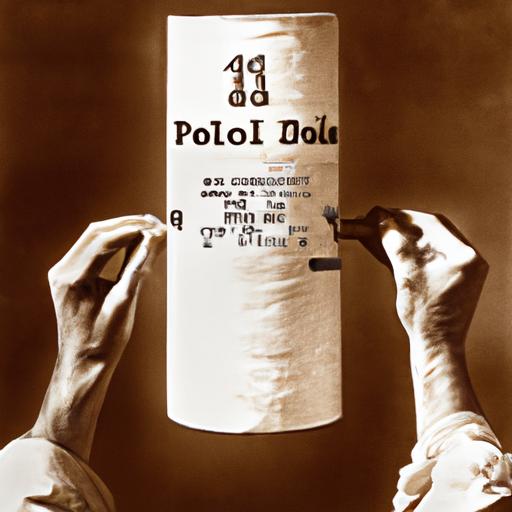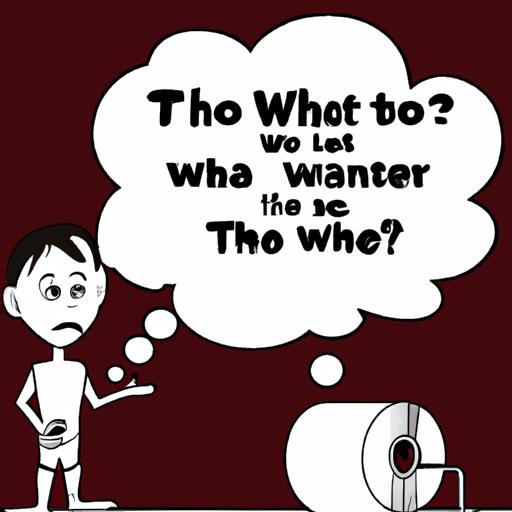When was Toilet Paper Invented?
Table of Contents
Introduction

Toilet paper is one of the most essential commodities in our daily lives. It is an essential item that we use every day, but we rarely think about its history and how it came to be. The history of toilet paper is an interesting one that dates back to ancient civilizations. In this article, we will explore the history of toilet paper, its evolution, and the impact it has on modern sanitation practices.
Early Sanitation Practices
The concept of sanitation has been around for thousands of years, and ancient civilizations employed various methods to maintain hygiene. The ancient Greeks used stones and pieces of clay to clean themselves after using the toilet, while the Romans used a sponge on a stick dipped in saltwater. In Asia, people used water and sometimes even their hands to clean themselves.
The first recorded use of paper for hygiene purposes was in China in the 6th century AD. The Chinese used paper made from mulberry trees to clean themselves after using the toilet. However, this practice was only limited to the wealthy and the privileged.
As paper became more readily available, it started replacing other materials used for hygiene purposes. In the 14th century, the Moors in Spain used paper for personal hygiene, and by the 16th century, paper was commonly used in Europe. However, the use of paper was not yet widespread, and people continued to use other materials like leaves, moss, and even corn cobs for personal hygiene.
In the next section, we will explore the evolution of toilet paper and how it became the essential item it is today.
Evolution of Toilet Paper (YOUR TURN)
Evolution of Toilet Paper
The first recorded use of toilet paper was in China in the 6th century. However, the use of toilet paper did not become widespread until the 19th century. In the early days, toilet paper was a luxury item, and only the wealthy could afford it. In Europe, the use of toilet paper was not widespread until the 16th century, and even then, it was only used by the rich.
Early toilet paper was made from a variety of materials, including rice straw, hemp, and mulberry bark. The production of toilet paper was a labor-intensive process, and each sheet of paper was made by hand. It was not until the 19th century that toilet paper production became more mechanized, and the production process became more efficient.
Modern Toilet Paper Production
The industrialization of the toilet paper industry began in the late 19th century. The first toilet paper factory was established in the United States in 1857, and by the early 20th century, toilet paper was being mass-produced in factories across the world.
Advancements in technology have led to significant improvements in toilet paper production. Today, most toilet paper is made from wood pulp, which is a more sustainable and environmentally friendly material than the materials that were previously used. The production process has also been streamlined, and machines are now used to produce toilet paper, making the process faster and more efficient.
In recent years, there has been a growing concern about the environmental impact of toilet paper production. To address this concern, many companies are now producing environmentally friendly toilet paper. This includes recycled toilet paper and toilet paper made from sustainable materials like bamboo.
In conclusion, toilet paper has come a long way since its first recorded use in China in the 6th century. It has evolved from a luxury item to an essential commodity that is used by people all over the world. The production process has also evolved, with advancements in technology and sustainability efforts leading to more efficient and environmentally friendly production methods.
Alternatives to Toilet Paper
In recent years, there has been a growing interest in alternative methods of personal hygiene, such as bidets and other water-based sanitation practices. Bidets are common in many parts of the world, especially in Asia and Europe. They use water to clean the genital area after using the toilet, and some models even come equipped with a dryer to eliminate the need for toilet paper.
Cultural differences also play a significant role in preferred hygiene practices. For example, in some cultures, using water to clean oneself after using the toilet is considered the norm, while in others, the use of toilet paper is the preferred method.
Conclusion
Toilet paper has had a significant impact on global sanitation practices. It has become an essential item that we use every day, and its evolution has led to the production of high-quality, sustainable products. However, the use of toilet paper is not without its drawbacks. The production and disposal of toilet paper have a significant impact on the environment, and alternative methods like bidets and other water-based sanitation practices are gaining popularity.
As we move forward, it is essential to continue to innovate and improve toilet paper production and usage to reduce its environmental impact. The history of toilet paper is an interesting one that continues to evolve, and it is fascinating to see how this simple item has had such a significant impact on our daily lives.

